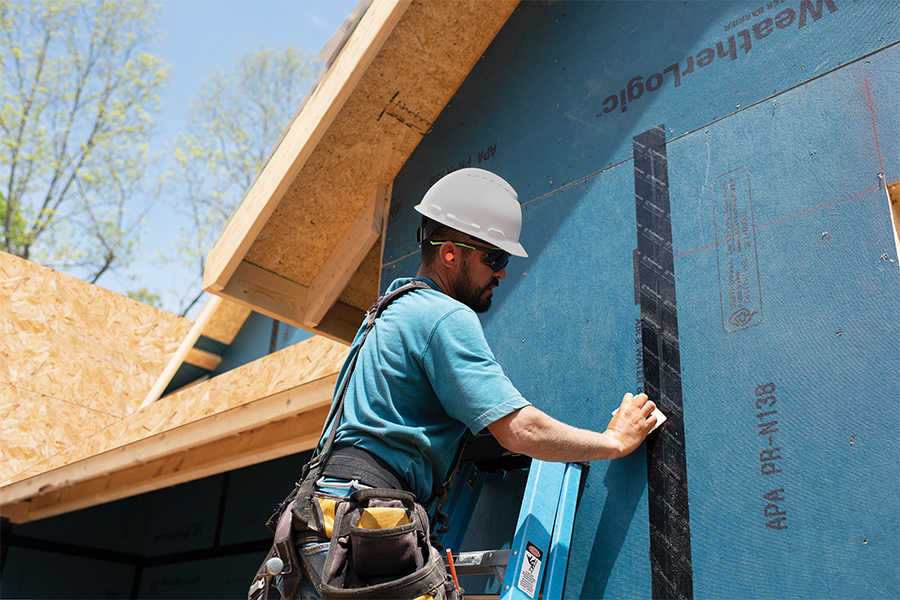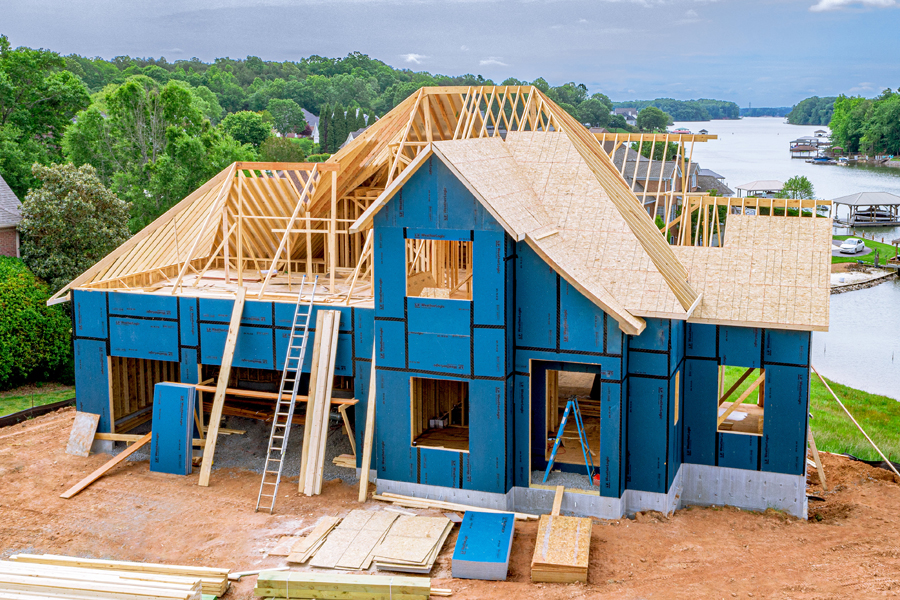Business Advice4 min
Wall Sheathing for High-Wind & Hurricane Areas
When you're working in an area of the country that is prone to high winds-or even hurricanes-structural strength for your builds is critical. If severe weather occurs, choosing the best sheathing for homes in hurricane areas can help mitigate damage and potentially reduce the extent of rebuilding necessary.
LP WeatherLogic® Air & Water Barrier serves as water-resistive barrier sheathing and, because it is classified as Structural I sheathing, it also adds structural strength. Let's examine why LP WeatherLogic panels can be a great fit for builders in high-wind and hurricane areas.
Considering Sheathing for Houses in Hurricane and High-Wind Areas
Builders are likely to have concerns about high winds and hurricanes in a couple of key areas. The obvious regions are along the Atlantic and Gulf Coasts, where there are numerous hurricanes throughout the hurricane season. However, there are other regions that can sustain very high straight-line winds in the range of hurricane force wind speeds, primarily along mountain ranges.
In these regions, high winds can create substantial lateral-i.e. horizontal-loads on a structure. The winds push on the windward-or upwind-walls and create suction that pulls on the leeward-or downwind-walls. These loads are additive and require shear walls to transfer those loads down to the foundation.
With that in mind, air- and water-resistive barrier sheathing with more than the standard level of structural strength may be helpful for homes that are prone to high winds.
Can Plywood Sheathing Be Used for Hurricanes?
Plywood sheathing and OSB products, such as LP WeatherLogic Air & Water Barrier, can both be used in areas prone to high winds and hurricanes. Code shear wall tables provide more information on each product's performance category (nominal thickness) and grade (Struc I sheathing, for example), so builders can make the best choice for each project and its specific weather considerations.
In some areas, materials discussions have made their way to city councils for official votes on codes and approved building solutions. Check out this case study from Galveston, Texas, and read more about how builders can balance resilient design with building codes in hurricane zones.
Wind and Rain Sheathing: LP WeatherLogic Air & Water Barrier
Classified as Structural I sheathing, LP WeatherLogic panels boast added structural strength for both walls and roofs. The WRB membrane added to the OSB sheathing provides moisture resistance, making it a complete exterior option for moisture management.

Structural I sheathing is a PS-2 grade of wood structural panel that has higher cross-panel bending and racking/shear strength than the conventional sheathing grade. In high-wind zones, this affords the designer an increased shear wall strength to resist the lateral loads induced on a structure.
LP WeatherLogic Air & Water Barrier provides more than the structural strength you'll need for building in a high-wind zone. It also offers a proven moisture management system and easier installation. This is due to the integration of the sheathing panel and water-resistive barrier (WRB). Instead of installing sheathing and housewrap in separate steps, LP WeatherLogic panels allow you to complete those steps at the same time.
Choosing the Best Sheathing for Homes in Hurricane and High-Wind Areas
Can a wall protect from wind? Sometimes, hurricane winds are too strong and damage is inevitable. But when you build with LP WeatherLogic Air & Water Barrier, you can take the right step toward keeping your build as strong as possible.

Looking for other ways to safeguard your build against high winds? Check out how our siding stands up to hurricane-level winds.
Continue Reading
Resiliency Solutions
5 minIntroducing LP® SmartSide® ExpertFinish® Naturals Collection™: Nature-Inspired Beauty Meets Engineered Performance
We're excited to introduce the LP® SmartSide® ExpertFinish® Naturals Collection™, a bold new addition to our trusted line of engineered wood siding and trim that delivers the warmth and beauty of nature with the advanced protection and performance builders and homeowners expect.
Labor Solutions
5 minChoosing the Right LP® Structural Solutions Product for Your Build
When it comes to building strong, reliable, and high-performing structures, the materials you choose matter. At LP Building Solutions, we understand that every project, whether it's a single-family home or a multifamily development, requires structural components that meet your needs for strength, durability, and efficiency.
Sustainability Solutions
5 minBuilding a More Sustainable Future with LP Building Solutions
In today's world, sustainability is no longer just a buzzword, it's a blueprint for responsible living and smarter building. As the construction industry seeks ways to reduce its environmental footprint, LP Building Solutions is focused on providing innovative building materials for eco-conscious builders to help reshape what it means to build sustainably
News & Stories3 min
History of Partnership with Gary Sinise Foundation
The LP Foundation is a proud partner of the Gary Sinise Foundation, which supports wounded veterans in several ways. You can learn more about the LP Foundation here.